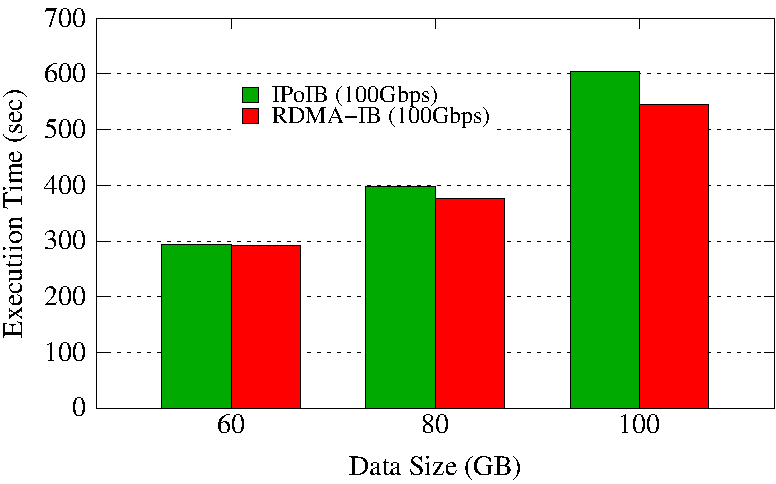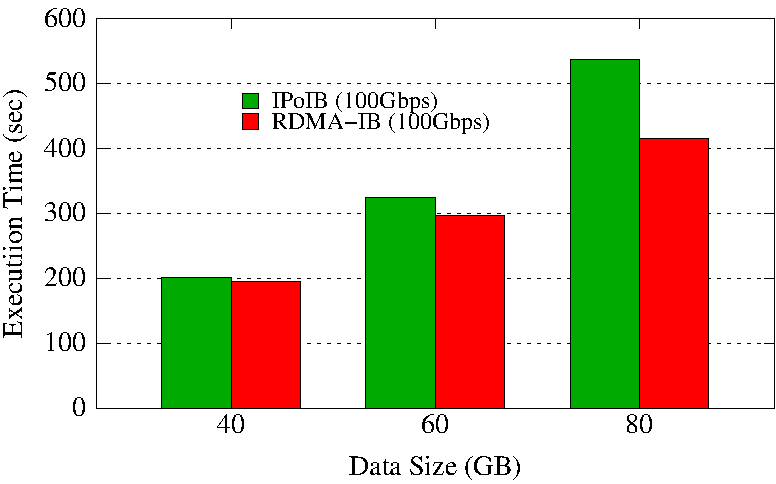In MapReduce over Lustre mode, we illustrate on two different configurations that we can use to evaluate this setup. Lustre is used to provide both input and output data directories. However, for intermediate data, either local disks or Lustre itself can be used. We evaluate our package with both setup and provide performance comparisons here. For detailed configuration and setup, please refer to our userguide.
MapReduce over Lustre (with local disks)
TeraSort Execution Time

Sort Execution Time

Experimental Testbed: Each node in OSU-RI2 has two fourteen Core Xeon E5-2680v4 processors at 2.4 GHz and 512 GB main memory. The nodes support 16x PCI Express Gen3 interfaces and are equipped with Mellanox ConnectX-4 EDR HCAs with PCI Express Gen3 interfaces. The operating system used is CentOS 7.
These experiments are performed in 8 nodes with a total of 32 maps and 16 reducers for TeraSort. Sort uses 14 reducers. Lustre stripe size is configured to 256 MB, which is equivalent to file system block size used in MapReduce. SSD inside each node is configured as intermediate data directory. Each NodeManager is configured to run with 6 concurrent containers assigning a minimum of 1.5 GB memory per container. The RDMA-IB design improves the job execution time of Sort by 22% over IPoIB (100Gbps). The maximum performance improvement for TeraSort is 10%.
MapReduce over Lustre (w/o local disks)
TeraSort Execution Time

Sort Execution Time

Experimental Testbed: Each node in OSU-RI2 has two fourteen Core Xeon E5-2680v4 processors at 2.4 GHz and 512 GB main memory. The nodes support 16x PCI Express Gen3 interfaces and are equipped with Mellanox ConnectX-4 EDR HCAs with PCI Express Gen3 interfaces. The operating system used is CentOS 7.
These experiments are performed in 8 nodes with a total of 32 maps and 16 reducers for TeraSort. Sort uses 14 reducers. Lustre stripe size is configured to 256 MB, which is equivalent to file system block size used in MapReduce. SSD inside each node is configured as intermediate data directory. Each NodeManager is configured to run with 6 concurrent containers assigning a minimum of 1.5 GB memory per container. The RDMA-IB design improves the job execution time of Sort by 17% over IPoIB (100Gbps). The maximum performance improvement for TeraSort is 17%.



